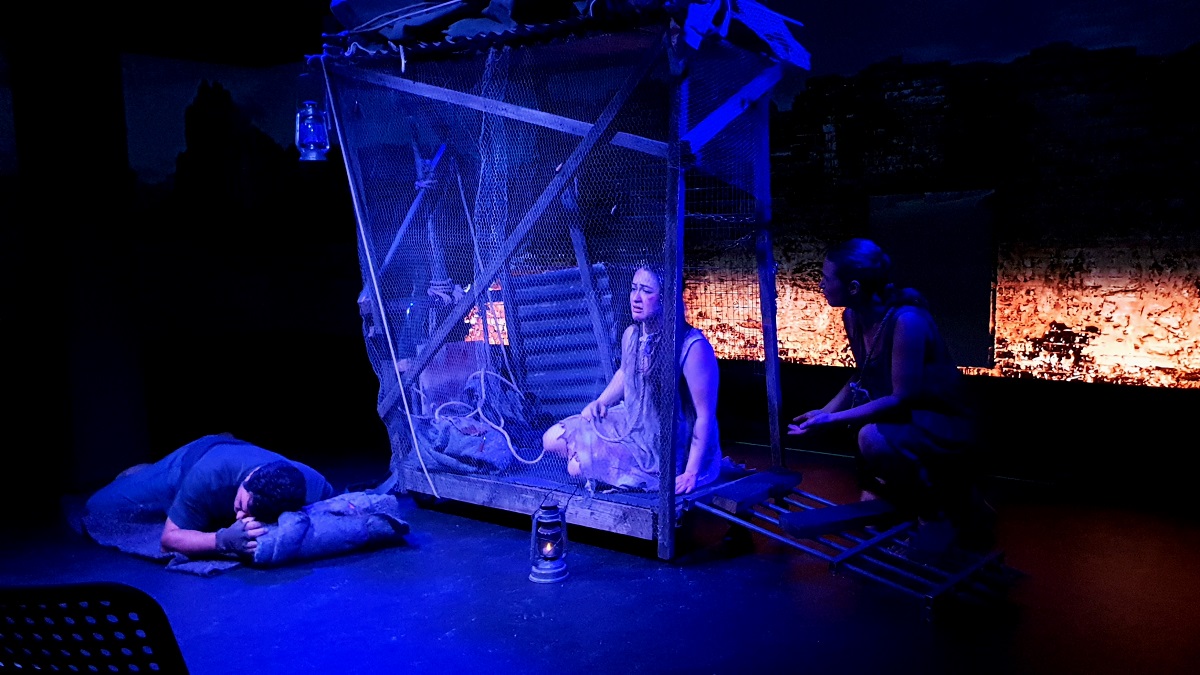Adelaide theatre-maker, academic, and director, Corinna di Niro has long been a fan of the work of the late Geoff Gillham. In particular she has taken to heart his Theatre-in-Education (“TIE”) piece, Bone Cage, and made it her own.
TIE’s remit is to make theatre which forms the basis of an educational outcome: anything from a short lesson for primary children, to a workshop for adults. Bone Cage poses questions around various issues, with intimate partner violence and coercive control at its heart. Di Niro first produced the piece at a conference on domestic violence, resulting in a creative writing workshop. She and her team have further developed it and recently performed the latest iteration for Fringe. This performance was live-streamed, and is now available as video on YouTube.
In this version, more interactive technology is employed in order to further draw the audience into the narrative. Sound and video is used to create a sense of unease and discomfort. The audience is encouraged to post questions and to add phrases to a word-cloud which appears later in the performance. A new addition this year is a short introductory scene, placing the three characters into a contemporary, realistic setting, contrasting with the dystopian framework of the substantive material. This certainly adds to the thought-provoking nature of the piece, although the dialogue could do with tighter writing: it’s currently a little stilted.
On video, some of the immersive quality of the work gets lost, but the performances of Georgia Laity, Suzanne Breeze, and Robert Donnarumma are as strong and intelligent as ever.
This moving performance is ably supported by technical work from Andrei Gostin, Phil van Hout, Susannah Emery, Claudia Kuerschner, Sina Matezki, Jonathan Kovarch, and Yogi Devgan.
The video itself needs cutting, as the first 30 minutes is a paused screen. Post-performance there is a Q & A with the cast and some of the crew, which enables further discussion of both the themes of the work, and the theatre-making which went into it.
This is a fabulous resource for drama teachers, those working in DV awareness, theatre-makers, and teachers of subjects such as Society & Culture.























